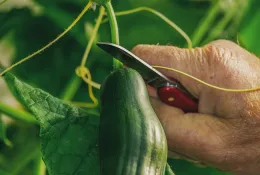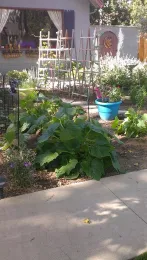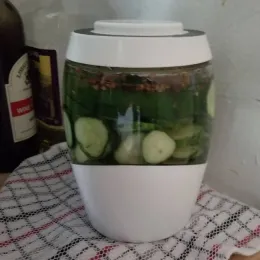The Amazing and Versatile Cucumber

But wait! Did you know that cucumbers are actually fruits? Botanically speaking a fruit should have at least one seed and grow from the flower of the plant. Because of this definition cucumbers are classified as fruits because they contain tiny seeds in the middle and grow from the flower of the cucumber plant. While I will always consider it a veggie - as I do that other “fruit” the tomato – knowing its proper classification makes my inner Master Gardener very happy.

Growing cucumbers is relatively easy, although they do take some care. They need plenty of sunshine, loose and nutrient dense, slightly acid soil. Adding several inches of compost or aged manure into the soil, worked in to a depth of about 6 inches, is usually all it takes to make them happy. They do not like frost so plant your seeds after the threat of frost has passed – about March 20th here in the Central Valley. If you are planting a vining variety place your trellis first, before planting your seeds or transplants to avoid disturbing the roots of the plants later on. Also cucumbers HATE being watered by sprinklers (trust me, I learned this one the hard way). Water only at the base of the plant - I use a drip system that the cucumbers seem to love.

Bush varieties need a little extra care as the immature cucumbers can die or get slimy if they sit on wet soil or in water all day. A good layer of mulch around the base of the plant and then under the maturing leaves will keep your cukes out of harm's way.
Harvesting your cucumbers will vary in timing and size depending on the variety, but on average it takes between 55 and 70 days. Your seed packets or the information that accompanies your transplants should tell you when to pick your cucumbers. But no matter the variety, always clip off your cucumbers, don't pull off or twist them. This can damage your plants and may discourage it from producing more flowers and thereby less cucumbers. With care, your plants should give you several harvests, especially if your succession plant your cucumbers – planting one to two weeks apart.
Once harvested, the fun begins. Your cucumbers can be added salads, made into sandwiches, and can be eaten straight from the vine (yes, you can eat the skin – be certain to wash it first). I love to make fresh tzatziki sauce for dipping and of, course, pickles! Fermented or refrigerated, dill or sweet, a pickle made from those from your own garden are extra special.

